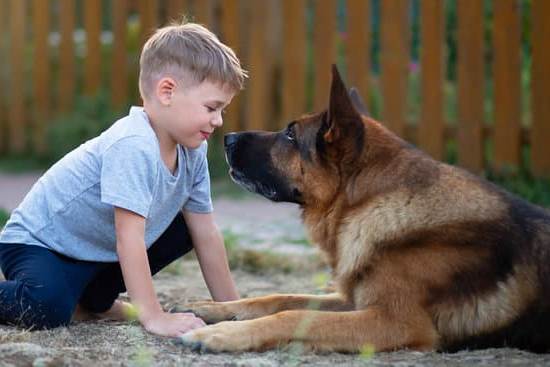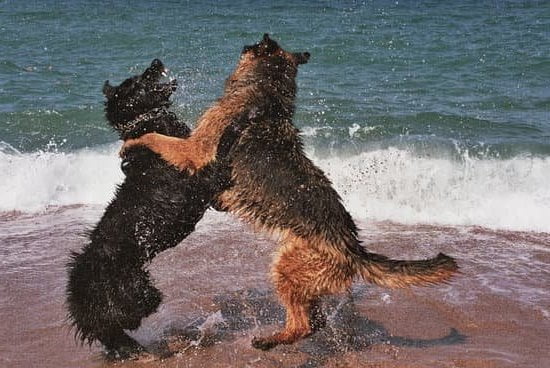Dog leash training is a crucial aspect of canine obedience and safety. Whether you have a new puppy or an adult dog, teaching them to walk politely on a leash is essential for their well-being and the peace of mind of their owners.
In this article, we will explore the importance of leash training and provide valuable information on understanding the basics, selecting the right leash, step-by-step training techniques, common challenges and solutions, positive reinforcement, leash safety, and advanced training.
Understanding the basics of dog leashes and their purposes is fundamental to successful leash training. Different types of leashes serve different functions, and knowing how to use them correctly can make a significant impact on your dog’s behavior while on walks. It’s also important to choose the right leash for your dog’s size and behavior. By selecting the appropriate leash, you can set yourself up for success in training your furry companion.
In the following sections, we will delve into detailed instructions on how to effectively train your dog to walk on a leash without pulling or lunging. Additionally, we’ll address common challenges that dog owners face during leash training and provide practical solutions for overcoming them. Positive reinforcement techniques will also be discussed in this comprehensive guide to dog leash training.
Understanding the Basics
When it comes to dog leash training, it is essential to understand the different types of dog leashes and their purposes. Each leash serves a specific function and is designed for different situations and dogs with varying behaviors. The most common types of dog leashes include standard leashes, retractable leashes, martingale leashes, and slip leads.
Standard leashes are the most basic type and are typically made of nylon or leather. They come in varying lengths and widths, giving owners options to choose based on their dog’s size and strength. Retractable leashes feature a cord that can extend and retract as needed, allowing dogs more freedom during walks while still maintaining some control.
Martingale leashes are designed for dogs that have a tendency to slip out of regular collars, providing more security. Slip leads are commonly used for training or controlling strong-willed dogs as they tighten around the neck when pulled.
Each type of leash has its own purpose, so it is important to select the right one based on your dog’s behavior and needs. For example, if you have a large or strong dog that tends to pull on walks, using a standard leash may not be sufficient. In this case, a martingale leash or slip lead may be more appropriate for better control.
Choosing the right leash is crucial for successful dog leash training. By understanding the differences between each type of leash and their purposes, owners will be able to select the best one suited for their dog’s behavior and training needs.
| Type of Leash | Purpose |
|---|---|
| Standard Leash | Basic control during walks |
| Retractable Leash | Freedom with some control |
| Martingale Leash | Security for dogs prone to slipping out of collars |
Selecting the Right Leash
When it comes to dog leash training, choosing the right leash is crucial for the process. The leash you select should be appropriate for your dog’s size and behavior in order to effectively train them and ensure a safe walking experience for both of you.
One important factor to consider when choosing a leash is the material it is made of. There are various options available, including nylon, leather, and retractable leashes. Each material has its own advantages and disadvantages. For example, nylon leashes are lightweight and durable, while leather leashes are strong and long-lasting. Retractable leashes provide more freedom of movement but may not be suitable for all dogs, especially those that require strict leash training.
Another consideration when selecting a leash is the length. A shorter leash provides more control over your dog, making it easier to guide them during training. On the other hand, a longer leash allows your dog more freedom to explore their surroundings but may require more advanced training to ensure they don’t pull or wander off.
In addition to material and length, it’s important to take into account your dog’s behavior. For example, if you have a strong or large breed dog that tends to pull on walks, a sturdy and non-elastic leash would be more appropriate for better control.
Conversely, if you have a smaller or calmer dog that doesn’t pull as much, a lighter and more flexible leash might be sufficient for their needs. By considering these factors when selecting a leash, you can set yourself up for success in your dog leash training journey.
| Leash Consideration | Advantages | Disadvantages |
|---|---|---|
| Nylon Leash | Lightweight and durable | May cause chafing with constant pulling |
| Leather Leash | Strong and long-lasting | Can be heavier and require maintenance |
Step-by-Step Training Techniques
When it comes to dog leash training, it is essential to have a step-by-step approach to ensure that your dog learns to walk on a leash without pulling or lunging. Here are some detailed instructions on how to effectively train your dog:
1. Start indoors: Begin by getting your dog used to wearing the leash and collar indoors. Allow them to move around freely while you hold onto the leash, so they can get comfortable with the feeling of being attached to it.
2. Positive reinforcement: Whenever your dog walks calmly on the leash without pulling or lunging, be sure to praise and reward them with treats or verbal praise. This positive reinforcement will help them understand that walking nicely on the leash is what you expect from them.
3. Practice in a quiet area: When you’re ready to take your dog outside, choose a quiet and familiar area for their first few walks on the leash. This will help minimize distractions and make it easier for them to focus on walking politely without getting too excited.
4. Correct unwanted behavior: If your dog starts pulling or lunging while on the leash, gently redirect their attention back to you using a verbal cue or by changing direction. Avoid yanking on the leash as this can cause discomfort and confusion for your dog.
5. Consistency is key: It’s important to be consistent with your training efforts and practice regularly. Over time, your dog will learn that walking calmly on a leash is the expected behavior.
By following these step-by-step training techniques, you can effectively teach your dog how to walk on a leash without pulling or lunging, creating a more enjoyable experience for both of you during walks.
Remember that every dog is unique, so be patient and understanding as you work through the process of dog leash training with your furry companion.
Common Challenges and Solutions
Leash training a dog can be a rewarding but challenging experience. There are common issues that many dog owners encounter during the training process, but with patience and consistency, these challenges can be overcome. Below are some of the most common problems faced during dog leash training and effective solutions to address them:
- Pulling on the Leash
- Lunging at Other Dogs or People
- Refusing to Walk
- Distracted Behavior
One of the most common challenges during dog leash training is pulling. Many dogs have a natural instinct to pull against the leash, making it difficult for their owners to maintain control. To address this issue, it is important to use positive reinforcement techniques such as treats and praise to reward desired behavior. Additionally, practicing loose leash walking exercises in a low-distraction environment can help teach the dog that pulling will not get them where they want to go.
Another common problem is lunging at other dogs or people while on a walk. This behavior can be both embarrassing and potentially dangerous. One effective solution is to work on desensitization and counter-conditioning techniques by gradually introducing the dog to other animals and people in a controlled setting. Using high-value treats and providing positive reinforcement when the dog remains calm can help change their reaction over time.
Additionally, some dogs may refuse to walk on a leash altogether, especially if they are anxious or fearful. In such cases, it’s important for owners to be patient and understanding. Gradual desensitization by starting with short walks in a familiar environment can help build up the dog’s confidence.
By implementing these solutions and consistently working with your dog, you can effectively address common challenges encountered during leash training and ensure that both you and your pet enjoy walks together safely and peacefully.
Positive Reinforcement
Building a Strong Bond
One of the key benefits of using positive reinforcement in leash training is that it helps to build a strong bond between you and your dog. By rewarding your dog with treats, praise, or toys when they exhibit the desired behavior on the leash, you are reinforcing their trust in you as their leader. This creates a positive association with walking on a leash and strengthens the bond between you and your furry companion.
Improved Behavior
Positive reinforcement also helps to improve your dog’s behavior during leash training. By rewarding them for walking calmly by your side without pulling or lunging, they will begin to understand what is expected of them. This encourages them to repeat the desired behavior in order to receive the rewards, making leash training more successful in the long run.
Reduced Stress and Anxiety
Using positive reinforcement techniques can help reduce stress and anxiety in both dogs and owners during leash training. Instead of focusing on correcting bad behavior, you can concentrate on rewarding good behavior, which creates a more positive and relaxed training environment. This can lead to a more enjoyable experience for both you and your dog while out for a walk.
Leash Safety
Walking your dog on a leash can be a great bonding experience and a way to provide exercise for both of you. However, it’s important to prioritize safety during these outings. Whether you have a new puppy or an older dog, here are some tips for ensuring the safety of your dog and yourself while on a walk.
Proper Fit and Inspection
Before heading out for a walk, it’s crucial to ensure that your dog’s leash is in good condition and properly fitted. Check for any signs of wear and tear, such as frayed edges or weak spots, and replace the leash if necessary. Additionally, make sure that the collar or harness fits securely but comfortably on your dog. A loose collar could result in your dog slipping out of it, while a tight collar could cause discomfort or injury.
Stay Alert
When walking your dog on a leash, it’s important to stay alert and aware of your surroundings at all times. Be mindful of potential hazards such as other dogs, wildlife, and even vehicles. Keeping an eye out for these potential dangers can help prevent accidents and keep both you and your furry companion safe.
Use Reflective Gear
Especially if you enjoy evening walks with your dog, consider using reflective gear to improve visibility. Reflective leashes, collars, or vests can make you and your dog more visible to drivers and other pedestrians in low-light conditions. This added visibility can greatly reduce the risk of accidents while out on walks with your pup.
By following these tips for leash safety, you can ensure that both you and your furry friend have a safe and enjoyable walking experience every time. Remember that proper training goes hand in hand with safety precautions when it comes to walking your dog on a leash.
Advanced Training
In conclusion, dog leash training is an essential aspect of ensuring a well-behaved and controlled pet. Understanding the basics of different types of dog leashes and selecting the right one for your dog’s size and behavior is crucial in setting the foundation for successful leash training. By following step-by-step training techniques and addressing common challenges with positive reinforcement, you can effectively train your dog to walk on a leash without pulling or lunging.
As you progress in your dog leash training journey, it’s important to consider advanced techniques for off-leash control and obedience. This involves building a strong bond with your dog, establishing trust, and reinforcing obedience commands even without the physical restriction of a leash. Advanced training not only enhances your control over your pet but also strengthens the communication between you and your furry companion.
Remember that consistency, patience, and positive reinforcement are key elements in successful dog leash training. By implementing advanced techniques for off-leash control and obedience, you can enjoy peaceful walks with your well-trained and obedient companion while ensuring their safety and the safety of others around them. Keep practicing and reinforcing good behavior, and soon enough, you will reap the rewards of investing time and effort into proper dog leash training.

Welcome to the blog! I am a professional dog trainer and have been working with dogs for many years. In this blog, I will be discussing various topics related to dog training, including tips, tricks, and advice. I hope you find this information helpful and informative. Thanks for reading!





